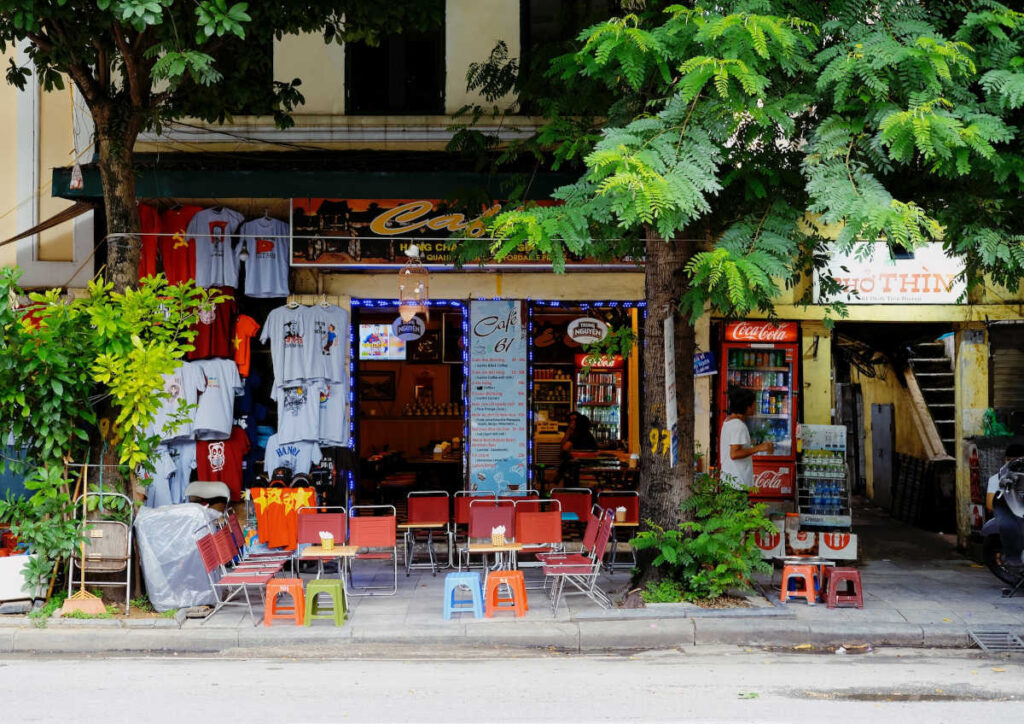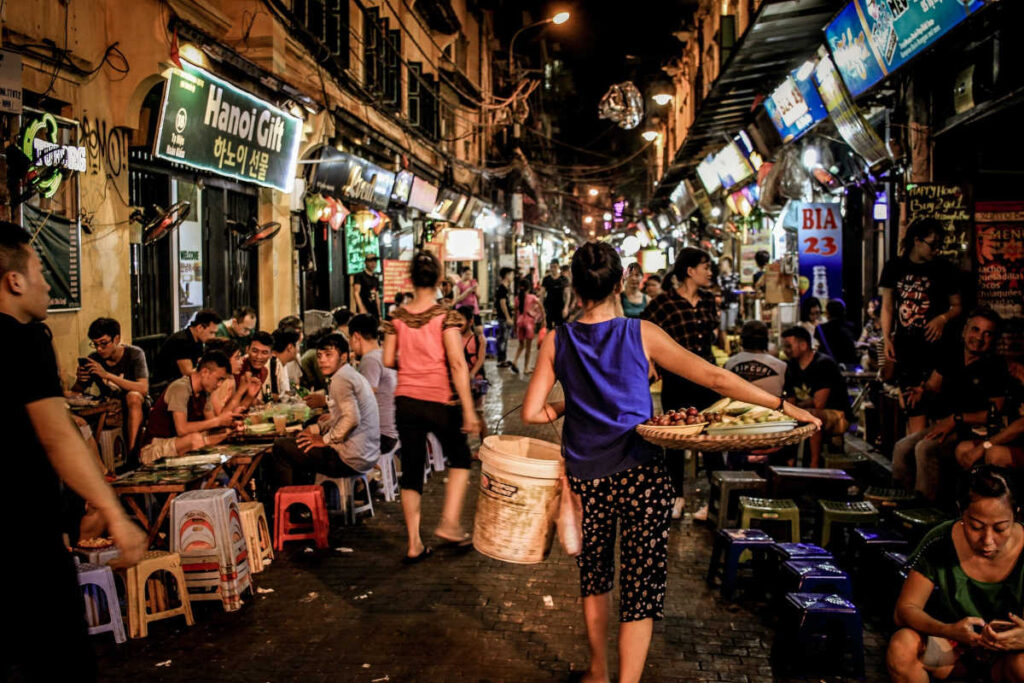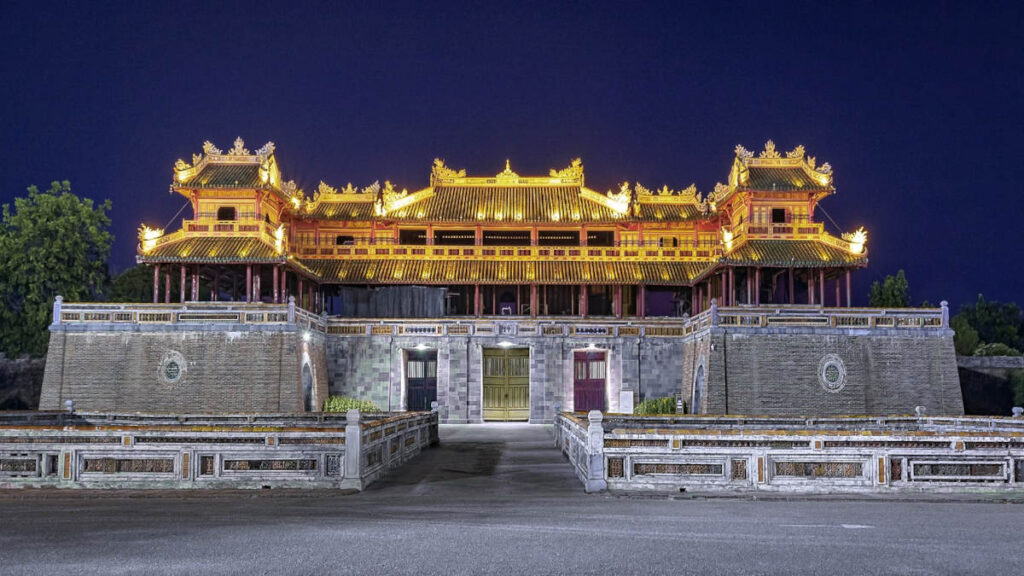Vietnam and coffee have an enduring and strong relationship stretching over many years. The country is now the second-largest coffee producer in the world, with a huge export market. Coffee farming continues to be a major source of income for Vietnam since the early 20th century. But what makes coffee in Vietnam unique?

History of Vietnamese coffee
Vietnamese coffee history dates back centuries. Coffee was first introduced to Vietnam by French Catholic missionaries, keen to get a caffeine fix while far from home.
Once the missionaries mastered growing and processing coffee beans, they had to find a solution to the lack of dairy products in Vietnam. To satisfy their thirst for café au lait they used condensed milk which would store for longer in the hot climate.
Condensed milk became the key ingredient in ca phe sua (milk coffee), and cà phê sữa đá which is an iced milk coffee. Vietnam’s two most popular coffees.
Coffee in Vietnam is typically very strong and rich, as the robusta beans are often roasted longer than other types of coffee. This results in a deep and intense flavor. Affectionately nicknamed ‘rocket fuel ’, Vietnamese coffee is not for the faint-hearted!
What makes Vietnamese coffee special
Locally grown Robusta beans are known for their deep, rich and intense flavour and high caffeine content.
Some roasteries even customise the beans by adding flavours such as chocolate or caramel, depending on the preferred taste of the local coffee drinkers.
Grinding Vietnamese coffee beans
The coffee beans are ground very finely, almost to a powder, which allows for more of the coffee’s natural flavors, aromas and oils to be extracted. These fine grounds control the flow rate of the water through the coffee, resulting in greater flavor extraction.
Coffee to water ratio
It’s often made with a coffee-to-water ratio of 1:2. So, for every 1oz of coffee, you add 2oz of hot water. This results in a very strong brew.
Phin filter brewing
Brewing coffee like the Vietnamese looks intimidating but is surprisingly easy.
Vietnamese coffee is usually made with a Phin filter. You place the Phin coffee maker on top of a glass or mug and add finely ground coffee.
Then place the gravity press into the brew chamber on top of the grounds.
Slowly pour in a little hot water – just enough to cover the gravity press and allow the coffee to bloom for 30-40 seconds. Next, fill the brew chamber to the top with more hot water.
The perfect brew should take about 5 minutes to complete. If yours takes more or less, try a finer or coarser grind until you get the timing right.
While the coffee is brewing, put 1-2 tablespoons of sweetened condensed milk into an 8oz glass.
Once the coffee is brewed pour it over the condensed milk.
For the full Vietnamese experience, fill the glass with ice and enjoy the most exciting iced coffee you will ever drink!
Vietnamese coffee shops

Enjoying coffee like a local in Vietnam is a unique experience. The classic Vietnamese coffee is rich and intensely flavored, with a large amount of sweetened condensed milk, often with added sugar. While it’s mostly served cold with ice, you can also order it hot. The sweet, rich nature of ca phe sua da (iced milk coffee) encourages slow sipping through a straw to enjoy every moment.
With such a hot and humid climate Vietnamese coffee shops give you the time to relax and soak up the atmosphere while sipping your chilled coffee. And that suits the locals, who don’t gulp down a quick caffeine fix, it’s about taking the time to relax, meet up with friends and enjoy the moment.
If you’re unfamiliar with Vietnamese coffee, one small cup is a good place to start. If the coffee is too strong, add more condensed milk. However, if you use too much milk, you’ll miss out on the coffee’s distinct flavor.
Please be aware that drinking more than one glass at a time may induce palpitations! Phincoffee has an incredibly high caffeine content.
Don’t even ask for decaf coffee. If you happen to prefer your coffee mild, order a ca phe bac xiu, which is a milky coffee with a lot of extra condensed milk – This tastes similar to coffee ice cream and may be a pleasant compromise.
Ordering coffee in Vietnamese
In the major cities and tourist attractions you will always find people able to speak English at some level. But when you wander from those centres its helpful to have an understanding of the Vietnamese language.
One of the most important things is to know how to order a coffee. It gives you a chance to relax, watch the world go by and to experience something central to Vietnamese culture – its coffee. To help you when ordering, here is a simple list of the popular coffees you can order:
- cà phê phin – filter coffee
- cà phê sữa – milk coffee
- cà phê sữa đá – iced milk coffee
- cà phê sữa nóng – hot milk coffee
- cà phê sữa tươi – fresh milk coffee
- cà phê bạc xỉu – milky coffee
- cà phê đá – iced coffee
- cà phê đắng – bitter coffee
- cà phê đen nóng – hot black coffee
- cà phê nóng – black coffee
- cà phê nâu – brown coffee
- cà phê trứng – egg yolk coffee
Always remember, with few exceptions the milk in your coffee will be sweetened condensed milk. So expect a rich creamy and very sweet drink. So it’s best to taste it before adding any sugar!
Where to enjoy coffee when visiting Vietnam
Coffee culture in Vietnam has boomed since the 90s’ and one of the best ways to enjoy Vietnamese coffee is by visiting one of the many traditional cafes that can be found all over the country.
Sitting in one of these cafés is a great way to unwind while still enjoying the city. Many people feel that this slow-drip coffee has helped to define Vietnamese coffee culture.
There are cafes on just about every street in every city, and these range from trendy cafes to older establishments that have remained family-run cafes for generations. Stop at any of these and you will be swiftly immersed in the groups of chatting locals of all ages, who can linger for hours over a single glass of their favorite drink.
Experiences to look out for
Similar to the reputation of Paris, France, Hanoi is the undisputed centre of café culture in Vietnam. Look out for:
- Trieu Viet Vuong is known as ‘Coffee Street’ in Hanoi’s historic Hai Ba Trung District. It is chock-a-block with cafes that range from family-run shops to more modern, fashionable places.
- Café Thai has existed in various forms since around the 1920s in Hanoi. These days, it’s a lively and brightly lit magnet for the young, with constant new arrivals parking their motorcycles outside.
- Apart from Hanoi, make time for a visit to the Imperial city of Hue. This former home of the emperors is the foodie centre of Vietnam. Apart from some of the best food in Vietnam, it has some of the most relaxing and atmospheric coffee shops in Vietnam

But don’t worry if your travel plans don’t give you enough time to wander and enjoy coffee in Hanoi. Throughout Vietnam, you will find friendly and peace-loving people and cafes selling coffee made with the Phin filter – the Vietnamese coffee maker.
What to Eat with Vietnamese Coffee:
Vietnamese coffee is so rich and flavorful drink that is easily enjoyed on its own. If you want to enhance your coffee with a meal, you need to look out for the more contemporary cafes. Traditional street cafes don’t normally serve meals. Though you will find a range of light snacks including:
- Spring Rolls

Spring rolls are a wonderful addition to Vietnamese coffee. The light and refreshing tastes of the spring rolls go wonderfully with the rich coffee.
- Banh Mi
Banh Mi is a type of sandwich that is traditionally made with pork belly, pickled vegetables, and cilantro. The savory flavors of the Banh Mi contrast and complement the coffee, and makes for a tasty meal.
Variations on Vietnamese Coffee:
The most common way coffee is served in Vietnam is as an iced coffee with milk – known as either a ca phe sua da (iced milk coffee) or ca phe nau (brown coffee) depending on what part of the country you are in. The combination of intense dark coffee and sweetened condensed milk give the coffee a chocolatey taste. But there are many other ways to enjoy coffee in Vietnam.
Black coffee (cà phê đen)
If you prefer a more intense falvor (bordering on bitter), you can order a black coffee (ca phe den).
Vietnamese egg coffee (cà phê trứng)
It’s said that after World War II, when condensed milk was hard to come by, Hanoians had to find another way to temper the intense flavor of their coffee. Egg yolks were available and became a popular inexpensive and creamy replacement for milk.
These days Vietnamese egg coffee is made with both egg yolk and condensed milk which are whisked together to a super creamy texture. This is layered on top of freshly brewed phin coffee.
If you’re shocked by the thought of drinking egg yolk coffee, don’t think of it like drinking an egg yolk in coffee. Instead, think of it as a deconstructed tiramisu – Italian coffee trifle.
The original Café Giang in Hanoi, where hot egg coffee was created, still serves a creamy cup of deliciousness.
Iced coconut coffee
A mixture of traditional Vietnamese drip coffee blended with coconut milk, ice and condensed milk. This refreshing treat is served in a glass and tastes almost like a coffee milkshake.
Yoghurt coffee
Mixing a traditional Vietnamese Phin drip coffee with yoghurt, condensed milk, and ice produces this taste sensation. The combination of the yoghurt’s sourness, the coffee beans’ deep intense flavor, and the condensed milk’s sweetness make for a unique taste experience.
Making Vietnamese Coffee at Home:
While you can increasingly find Vietnamese coffee available at most coffee shops now, it is also easy to make at home. You don’t even need a Phin filter. You only need a couple of shots of espresso coffee, sweetened condensed milk and ice. Then simply combine the ingredients and enjoy!
For the best results, use dark roasted Robusta coffee beans for the characteristic bold and robust flavors.
For a less intense cup of Joe, arabica coffee beans are an option as these will provide a richer, less bitter, taste.
Even if you don’t have a Phin coffee filter or an espresso machine, there are lots of ways to make strong coffee. You can use whatever coffee maker you have, like a French press, drip coffee machine or pour-over coffee maker. Just make sure to use a fine grind and brew for at least 4-5 minutes to get the most flavor.
The bottom line
This is not an everyday coffee. Aside from the high caffeine content, which rivals that of some energy drinks, it also contains plenty of sugar thanks to the sweetened condensed milk. Maybe Vietnamese coffee can be reserved for those occasions when you want or need an extra boost of energy, and/or a special treat.
Next time you’re in the mood for something different, give this distinct style of coffee a try. You might just discover that it’s your new favorite cup of coffee, and you will certainly get an energy boost.
FAQs
Is Vietnamese coffee healthy?
Vietnamese coffee contains caffeine, which can have both positive and negative health effects. Consuming too much caffeine can cause side effects such as insomnia, headaches and jitters
Vietnamese coffee is almost all made of with robusta beans, which contain up to 100% more caffeine than arabica beans. While too much caffeine is bad for you, a little can give you a helpful energy boost.It’s usually made with sweetened condensed milk, which adds fat, sugars and calories but also helps reduce the bitterness of the robusta coffee making it easier to drink.
Overall, Vietnamese Coffee is not necessarily bad for you if enjoyed occasionally.What is the Vietnamese coffee caffeine level?
Estimates of the amount of caffeine in a cup of Vietnamese coffee vary widely. The actual amount in a cup depends on several factors including:
- the amount of coffee used – making a cup with 2oz of ground coffee will contain twice as much as a cup made with 1oz of coffee.
- the beans used – most coffee in Vietnam is produced using robusta coffee beans. Robusts contains up to double the amount of caffeine found in arabica coffee.
- Making coffee with more milk and less coffee reduces the overall amount of caffeine – If you use an 8oz glass and pour in 4oz of brewed coffee filling the rest with milk, that glass will contain more caffeine than the same glass with 2oz of brewed coffee and 6oz of milk.
Why is Vietnamese coffee so strong?
There are several reasons why Vietnames coffee is so strong:
It’s traditionally made with robusta beans, which contain higher levels of caffeine than arabica beans
Robusta coffee is known to have a deeper more intense and even bitter taste than arabica coffee. That gives the coffee a feeling of being very strong.
The Phin coffee filter is designed to slowly brew the coffee. It relies on very finely ground coffee slowing the water passing through.
The combination of fine ground coffee and longer contact with the water helps concentrate the flavor and intensity of the brew.
But the biggest factor is the generous amount of ground coffee Vietnamese cafes put into the coffee maker. Using two large scoops per cup, more than doubles the coffee grounds usually needed for one cup of regular drip or pour-over coffee.
Why do Vietnamese people love coffee?
The people of Vietnam are amongst the most friendly and welcoming in the world. They love to socialise and enjoy life.
Lots of the population do hard exhausting physical work, so the energy boost from caffeine and sweetened condensed milk (plus heaps of sugar!) help them get started and keep going.
Plus the coffee, being so strong, has a somewhat addictive effect. I’m sure you (like me) have experienced the urge to have that first cup of Joe every morning.
The most popular way to drink coffee in Vietnam is with condensed milk sugar and ice. Given the hot and humid climate, an iced coffee is really refreshing.
Hi, I’m Eric Loftuss, co-founder of Bean Thirst with my wife Sophie.
My Coffee journey started young. I used to help my mom with the weekly shopping trip and we always called in to a coffee wholesaler and retail outlet in our town.
I really started to learn about coffee when, while in college, I worked in a local coffee shop and trained as a barista. Even though I went on to qualify and work as a lawyer, I still get a kick out of brewing a cup of Joe.
Sophie and I are so glad to be part of your coffee journey. Find out more about us
